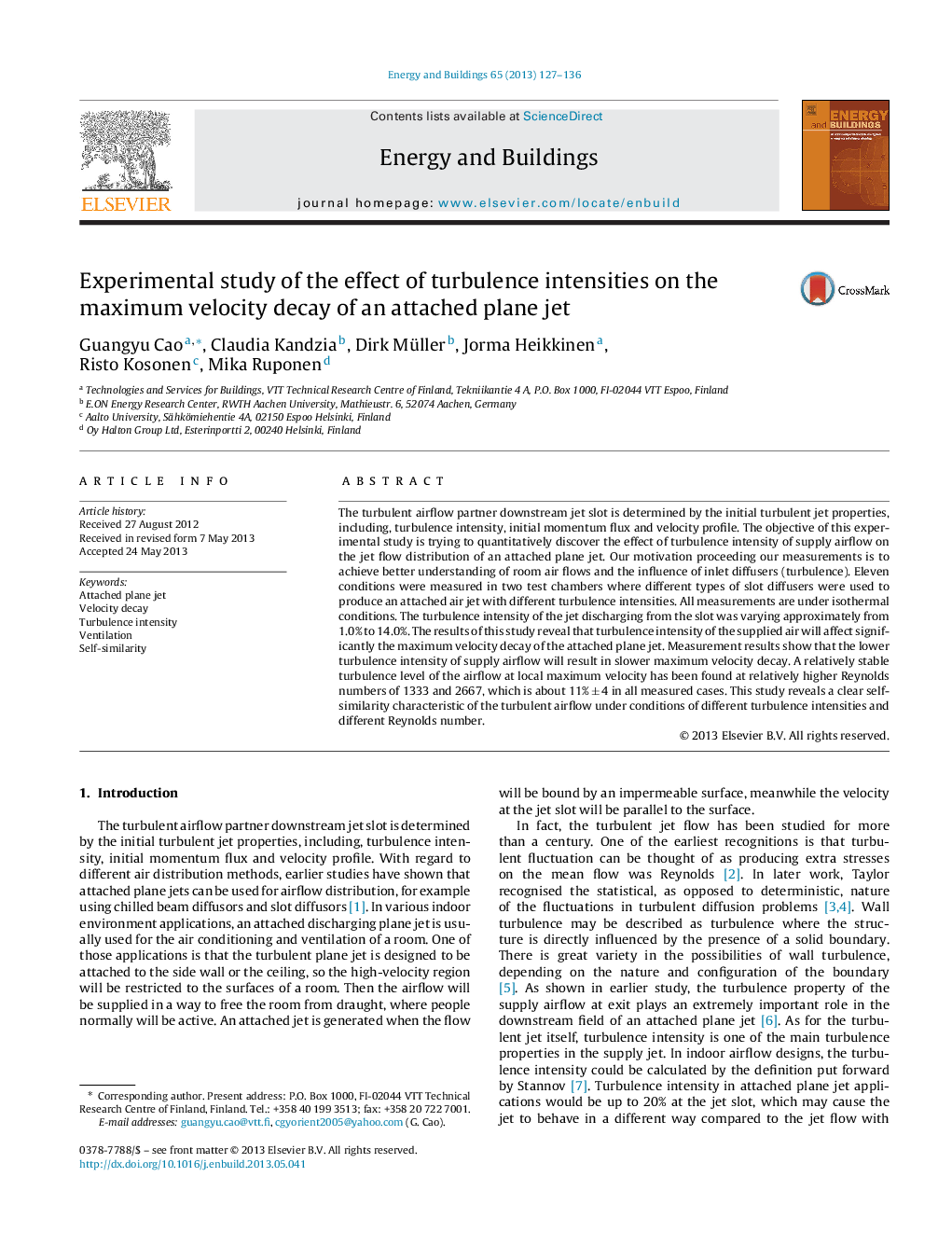| کد مقاله | کد نشریه | سال انتشار | مقاله انگلیسی | نسخه تمام متن |
|---|---|---|---|---|
| 263197 | 504068 | 2013 | 10 صفحه PDF | دانلود رایگان |

• Eleven cases of turbulent jet flow were measured with three turbulence intensities (Tu).
• The effect of Tu were analyzed on the jet velocity decay.
• It found that the maximum velocity decay of a jet is smaller with a smaller Tu.
• A relative stable turbulence level has been found in all cases downstream the slot.
The turbulent airflow partner downstream jet slot is determined by the initial turbulent jet properties, including, turbulence intensity, initial momentum flux and velocity profile. The objective of this experimental study is trying to quantitatively discover the effect of turbulence intensity of supply airflow on the jet flow distribution of an attached plane jet. Our motivation proceeding our measurements is to achieve better understanding of room air flows and the influence of inlet diffusers (turbulence). Eleven conditions were measured in two test chambers where different types of slot diffusers were used to produce an attached air jet with different turbulence intensities. All measurements are under isothermal conditions. The turbulence intensity of the jet discharging from the slot was varying approximately from 1.0% to 14.0%. The results of this study reveal that turbulence intensity of the supplied air will affect significantly the maximum velocity decay of the attached plane jet. Measurement results show that the lower turbulence intensity of supply airflow will result in slower maximum velocity decay. A relatively stable turbulence level of the airflow at local maximum velocity has been found at relatively higher Reynolds numbers of 1333 and 2667, which is about 11% ± 4 in all measured cases. This study reveals a clear self-similarity characteristic of the turbulent airflow under conditions of different turbulence intensities and different Reynolds number.
Figure optionsDownload as PowerPoint slide
Journal: Energy and Buildings - Volume 65, October 2013, Pages 127–136